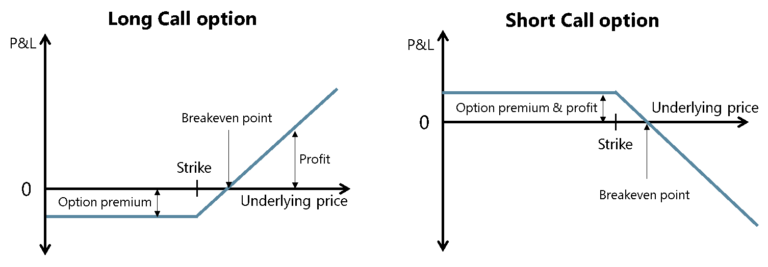Call options

What do long/short positions in call options mean?
In the simplest terms, there are four positions an investor can take in options:
- Buy call options (long)
- Sell/write call options (short)
- Buy put options (long)
- Sell/write put options (short)
First, we’ll consider call options. An investor that buys call options benefits from this position when the price of the underlying asset is higher than the strike price of the option at expiry. This allows the investor to buy the underlying asset at a price that is lower than the market price. Since the market price of the underlying asset could theoretically be infinitely high, the profit potential of this strategy is also unlimited.
Conversely, if at expiry the price of the underlying asset is lower than the strike price, the option expires with no intrinsic value and the investor’s loss is limited to the option premium paid when entering into the contract. The seller/writer of the call option has the opposite pay-off potential and receives a fixed option premium when they sell the contract. However, they may also have a theoretically unlimited loss.
Examples
- Long call option: an investor buys a call option on a share at a premium of €1, a strike price of €50, and the multiplier is 100. If at expiry the share price is below €50, the option will expire with no intrinsic value and the investor’s loss will be equal to the €100 premium paid to enter into the position. However, if the share price is higher than the strike price, then the option position starts earning a profit when the premium paid when entering into the position is offset, i.e. when it passes the break-even point, which is at €50 + €1 = €51.
- Short call option: on the other side of the trade is the investor who sold the call option. If at expiry the share price is below €50, the writer will earn a profit equal to the €100 premium received from the long buyer. However, if the price increases above the strike price, then the writer of the call option will incur a loss when the share price crosses €51.
Schematically, the pay-off of a long and short call position looks like this:






